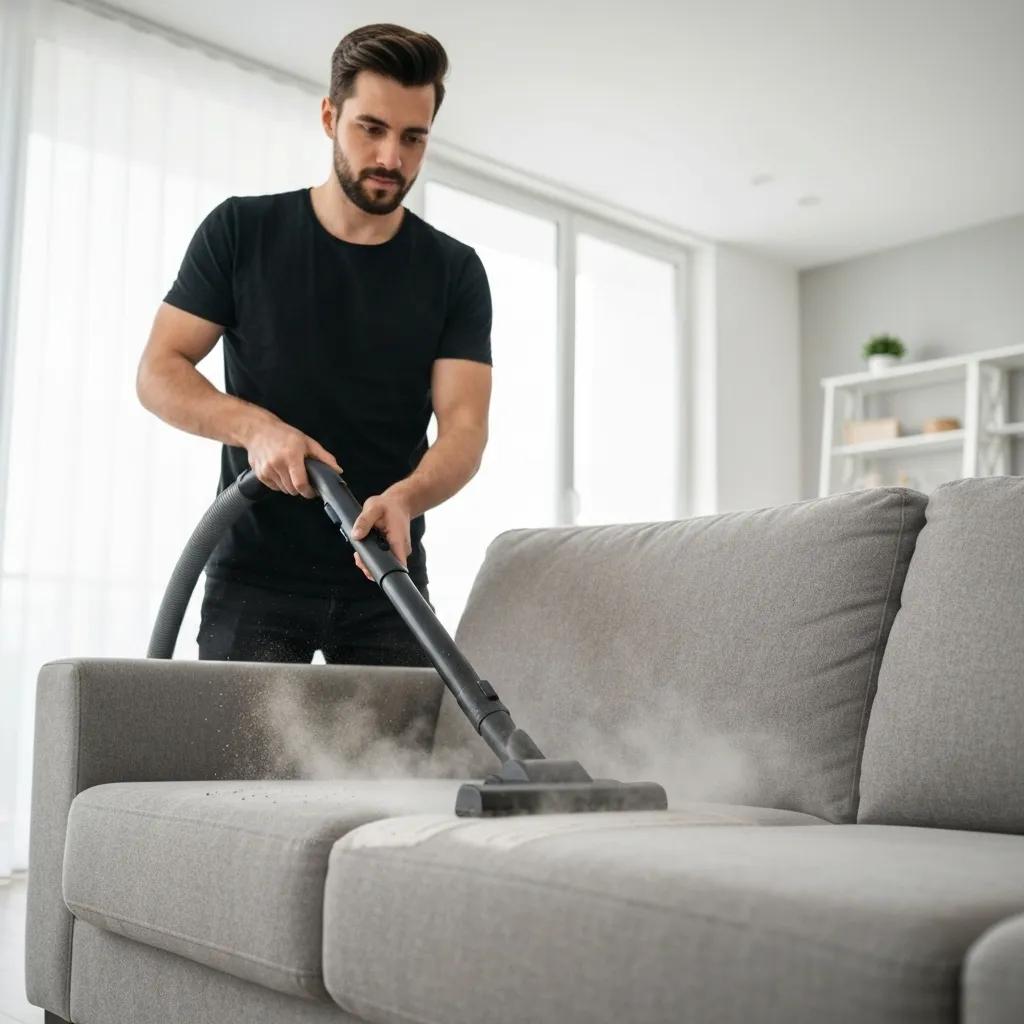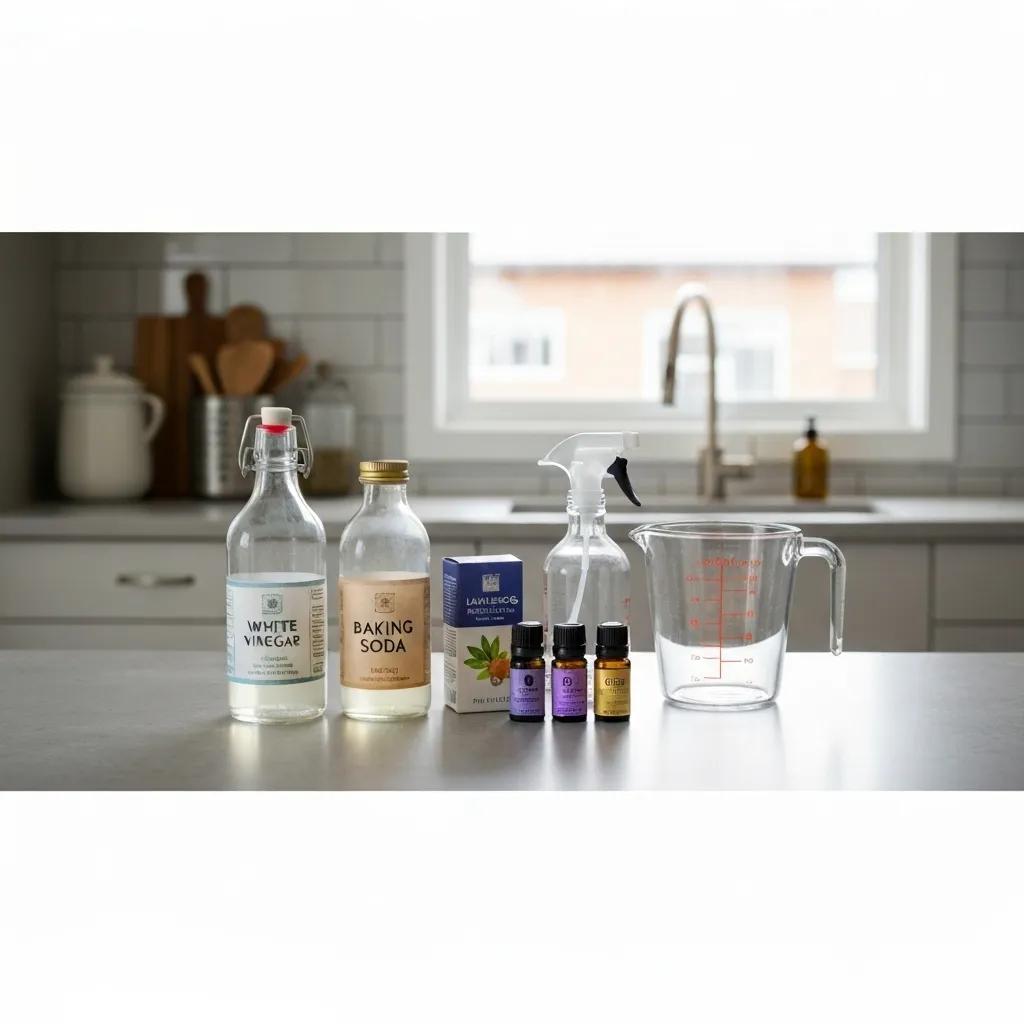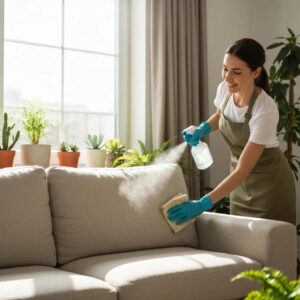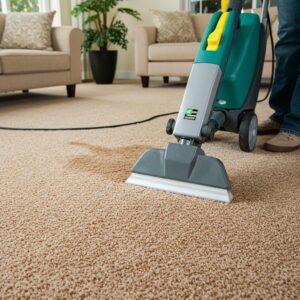
Mastering Upholstery Cleaning: Expert Techniques, Fabric Care, and Green Solutions in Miami
Achieving pristine upholstery involves a blend of professional techniques, environmentally conscious solutions, and fabric-specific care to revitalize sofas, chairs, and sectionals while ensuring their longevity. Homeowners and businesses throughout Miami rely on expert methods to tackle stubborn stains, eliminate allergens, and maintain healthy indoor air quality. This comprehensive guide delves into fundamental cleaning approaches, fabric-safe strategies, DIY stain removal, green practices, recognizing when to call Zellar Cleaning professionals, and implementing preventative measures to extend your upholstery’s lifespan. You’ll discover the mechanics behind vacuuming, steam cleaning, dry cleaning, and hot water extraction; learn how to care for leather, microfiber, natural, and synthetic fabrics; explore homemade and eco-friendly formulations; identify the signs that indicate a need for Zellar Cleaning’s upholstery cleaning expertise; and master preventive measures to keep your furniture looking its best. By understanding and applying these premier upholstery cleaning techniques, you’ll ensure impeccable results and sustainable fabric care.
What Are the Most Effective Upholstery Cleaning Methods in Miami?
Upholstery cleaning encompasses a spectrum of professional and do-it-yourself methods designed to lift embedded dirt and contaminants from fabric surfaces. Each technique utilizes specific mechanisms—such as mechanical agitation, heat application, or solvent action—to penetrate fibers, dissolve soils, and extract debris, leaving your furniture revitalized. For instance, steam cleaning employs high-temperature vapor to break down allergens and bacteria, while hot water extraction flushes out residues for a deep sanitization. Understanding these core processes is key to selecting the optimal method for achieving spotless, durable upholstery.
The initial step in any deep cleaning process is surface preparation, and vacuuming plays a crucial role in removing loose particles, thereby enhancing the effectiveness of subsequent cleaning approaches.
How Does Vacuuming Prepare Upholstery for Deep Cleaning?

Vacuuming prepares upholstery by meticulously removing surface debris and allergens. This crucial step prevents embedded soil from being pushed deeper into the fabric during more intensive cleaning processes, ultimately promoting fabric longevity. The suction mechanism, aided by specialized attachments, effectively lifts dust, pet hair, and residue, optimizing fiber exposure and preventing scratches or abrasion during subsequent treatments. For example, the upholstery tool concentrates airflow along seams and under cushions, ensuring a thorough baseline cleanup.
Follow these steps for effective upholstery vacuuming:
- Attach the upholstery brush or crevice tool to access seams, tufts, and edges.
- Work in overlapping strokes, moving from top to bottom to capture settled particles.
- Empty the vacuum canister or replace the bag when it’s half-full to maintain optimal suction power.
- Inspect fibers under natural light to identify any remaining debris before proceeding with deeper cleaning methods.
Consistent vacuuming not only extends the life of your upholstery but also significantly boosts the effectiveness of both professional and DIY cleaning techniques that follow.
What Is Steam Cleaning and When Should It Be Used?
Steam cleaning utilizes pressurized, high-temperature vapor to loosen embedded soils, eradicate bacteria, and neutralize odors, resulting in a hygienic finish and fresher-looking upholstery. This heat-based mechanism effectively breaks down oils and allergens without the need for harsh chemicals, making it an excellent choice for heavily soiled or high-traffic areas. Residential sofas with durable fabrics greatly benefit from steam’s deep sanitizing capabilities, while more delicate materials may require low-moisture steam settings to prevent shrinkage.
Condition: Opt for steam cleaning when fabrics are labeled ‘W’ or ‘WS’ and can safely withstand heat without damage, ensuring optimal sanitization while preserving fiber integrity.
How Does Dry Cleaning Work for Upholstery?
Dry cleaning involves applying solvent-based agents to dissolve grease and oils within upholstery fibers, followed by low-moisture extraction to lift residues without saturating the fabric. This water-free technique is essential for preventing shrinkage on sensitive materials coded ‘S’ or ‘WS’, thereby preserving their color and texture. For instance, environmentally friendly solvents encapsulate soils into micro-bonds that are then vacuumed away, resulting in a quick-dry finish with minimal disruption.
Dry cleaning is the preferred method for delicate or antique upholstery that cannot tolerate water-based treatments and requires gentle yet effective soil removal.
What Are the Benefits of Hot Water Extraction for Upholstery?
Hot water extraction injects heated cleaning solution deep into upholstery fibers, agitating them to dislodge dirt before powerful suction removes moisture, microbes, and residues for a thorough cleanse. This method’s combination of heat and pressure offers significant allergen reduction and odor eradication, contributing to extended fabric lifespan. Hotels and commercial environments frequently opt for this method due to its rapid turnaround time and unmatched sanitation levels.
- Achieve deep sanitation through elevated temperatures
- Effectively remove allergens and pollutants for improved indoor air quality
- Benefit from balanced moisture control that prevents mold and over-wetting
The precise moisture management inherent in hot water extraction ensures that fabrics dry within hours, minimizing downtime for businesses or households.
Cimara Cleaning, What Are The Best Methods For Upholstery Cleaning? ([2025-07-18])
Professional Upholstery Cleaning Process
Professional upholstery cleaning services commonly employ hot water extraction, injecting heated water and cleaning solution into the fibers to dislodge particles, followed by powerful vacuum extraction. This method effectively removes grime without causing damage to the material.
When Is Spot Cleaning the Best Approach?
Spot cleaning is the ideal method for targeting small stains by applying a concentrated cleaning solution directly to the affected area. This localized approach dissolves discoloration without treating the entire surface, thereby preserving the integrity of surrounding fibers. The targeted mechanism involves blotting and gentle agitation to lift spills like coffee, wine, or pet accidents before they have a chance to set. For example, a neutral pH spotter can effectively break down tannins in wine while preventing color bleeding on mixed-fiber fabrics.
Spot cleaning is best suited for fresh spills and minor blemishes, offering a quick remedy that avoids the need for unnecessary deep-cleaning cycles.
How Do You Clean Different Upholstery Fabrics Safely and Effectively?
Cleaning various upholstery fabrics demands strict adherence to manufacturer codes and the application of tailored methods to prevent damage while maximizing soil removal. Fabric codes serve as essential guides, indicating whether water-based, solvent-based, or specialized approaches are safe for the material. Understanding these classifications ensures you apply the correct technique for leather, microfiber, natural fibers, and synthetics, thereby preserving their appearance and performance.
Familiarizing yourself with cleaning codes is a critical prerequisite to any fabric-specific procedure, ensuring the protection of textile integrity and reliable outcomes.
What Are Upholstery Cleaning Codes and How Do They Guide Fabric Care?
Upholstery cleaning codes are designed to classify fabric compatibility with various cleaning agents and methods, guiding safe care practices to prevent color loss, shrinkage, or fiber damage. Each code provides specific instructions on the optimal solvent or solution to use:
Clad Home, Fabric & Upholstery Care ([2025-07-08])
Upholstery Cleaning Codes and Fabric Care
Upholstery cleaning codes, such as W, S, WS, and X, are used to classify fabric compatibility with cleaning agents and methods, guiding safe care to avoid damage like color loss or shrinkage. These codes indicate the optimal solvent or solution to use for each fabric type.
After understanding the codes, it’s time to address the distinct care requirements of leather upholstery cleaning to maintain its natural oils.
How to Clean Leather Upholstery Without Damage?
Cleaning leather upholstery requires the use of pH-balanced leather cleaners that effectively dissolve surface oils and dirt while simultaneously nourishing the natural fibers to prevent cracking. The process involves gentle microfiber towels and circular motions to lift soils without causing scratches. Following the cleaning, a dedicated leather conditioner replenishes moisture and establishes a protective barrier against future stains.
Implementing leather-safe maintenance practices protects its finish and flexibility, paving the way for specialized microfiber care techniques.
Real Simple, How to Cleana Leather Couch to Keep It Looking New ([2025-02-02])
How to Clean Leather Couch
Leather furniture necessitates regular cleaning and maintenance to preserve its appearance. A simple cleaning solution composed of a 50/50 mixture of vinegar and water can be applied with a microfiber cloth using a circular motion to lift dirt effectively.
What Are the Best Techniques for Microfiber Sofa Cleaning?
Microfiber sofas benefit from either solvent or water-based cleaning, depending on their specific care tag—microfiber coded ‘WS’ allows for a broader range of cleaners. The penetrative mechanism involves using a light foam generated from mild detergent or isopropyl alcohol, which is then gently agitated with a soft brush to lift oils and dust. After extraction, the fibers regain their uniform nap when brushed lightly.
Effective microfiber cleaning restores the fabric’s texture and eliminates hidden allergens, ensuring a hypoallergenic seating environment.
This Old House, How to Cleana Microfiber Couch ([2023-09-07])
How to Clean a Microfiber Couch
Microfiber couches require specific cleaning methods tailored to their cleaning code. The codes are: W (water-based cleaner), S (solvent-based cleaner), S-W (either solvent or water-based cleaner), and X (vacuum only).
How Should Natural Fabrics Like Cotton, Linen, and Wool Be Cleaned?
Natural fabrics require balanced water-based cleaners or enzyme solutions that effectively dissolve organic soils without causing over-saturation, followed by prompt drying to prevent shrinkage. For wool, using low-temperature water and wool-safe detergent is crucial for maintaining fiber loft, while linen and cotton can tolerate slightly warmer mixtures to tackle stains. Applying a fabric protector after cleaning enhances resistance to spills and UV fading.
Proper care for natural fibers safeguards their inherent softness and resilience, bridging the gap to synthetic care techniques.
What Are the Recommended Methods for Synthetic Upholstery Fabrics?
Synthetic fabrics, such as polyester and nylon, effectively release soils through hot water extraction or low-moisture dry cleaning, leveraging their inherent stain resistance and durability. The heat-based extraction mechanism efficiently flushes away deep-set particles, while dry methods preserve their quick-drying attributes, making them ideal for busy environments. Proper rinsing and brushing are essential to restore fiber alignment and achieve a uniform sheen.
Synthetic-friendly protocols maximize durability and color retention, underscoring the critical importance of selecting the appropriate cleaning method.
What Are the Best DIY Upholstery Cleaning Solutions and Stain Removal Techniques?

DIY upholstery cleaning solutions utilize readily available ingredients to effectively dissolve soils and neutralize odors, offering a cost-effective and environmentally conscious approach to stain removal. Natural cleaners harness the power of gentle acids, enzymes, and alkalines to target specific soils without harming delicate fibers. Employing these homemade remedies responsibly can yield results comparable to professional cleaning for minor blemishes and routine care.
Homemade solutions empower you to extend professional-level care into your everyday maintenance routine.
How Can You Remove Common Upholstery Stains Like Coffee, Wine, and Pet Stains?
Removing common upholstery stains effectively involves matching the stain’s chemical composition with the appropriate cleaning agent, followed by gentle blotting and rinsing to preserve the fabric. The following table outlines targeted stain removal strategies:
Targeted stain tactics swiftly restore fabric appearance and prepare fibers for broader cleaning efforts.
What Are Effective Homemade Upholstery Cleaners Using Natural Ingredients?
Homemade upholstery cleaners are crafted using safe, plant-based components that effectively break down soils and odors while safeguarding fabric health. These mixtures promote eco-friendly maintenance and reduce chemical exposure within your living spaces.
- Citrus-infused vinegar solution for effective organic stain removal.
- Baking soda paste to absorb oils and neutralize unpleasant smells.
- Enzyme-based spray created with liquid soap and warm water.
- Castile soap foam to lift dirt without leaving residue.
Natural DIY cleaners provide homeowners with versatile tools that complement professional cleaning methods.
How Do You Test and Apply DIY Cleaners Safely on Upholstery?
Testing DIY cleaners on an inconspicuous area is crucial to verify colorfastness and fiber tolerance, thereby preventing widespread damage. Apply a small amount, allow it to sit for 10 minutes, and then blot to assess for any discoloration. Once confirmed safe, use circular motions with clean towels to clean the area, taking care to avoid over-saturation and ensuring rapid drying with fans or adequate airflow.
Pre-testing safeguards your upholstery’s integrity and builds confidence in your at-home cleaning efforts.
What Tools Are Essential for DIY Upholstery Cleaning?
DIY upholstery cleaning requires a selection of basic tools that optimize solution application and residue removal, ensuring consistent results. Essential items include:
- A handheld vacuum equipped with specialized upholstery attachments
- Soft-bristle scrub brushes for gentle fabric agitation
- Spray bottles for even and controlled solution distribution
- Microfiber cloths for effective blotting and polishing
- A small bucket for preparing cleaning mixtures
With these essential tools, homeowners can achieve professional-grade results using natural cleaning formulas.
What Are the Benefits and Methods of Eco-Friendly Upholstery Cleaning?
Eco-friendly upholstery cleaning utilizes biodegradable agents and low-moisture techniques to minimize environmental impact while delivering effective fabric care. Green methods eliminate harsh chemicals, protect indoor air quality, and extend upholstery lifespan through sustainable practices. These benefits align perfectly with Zellar Cleaning’s commitment to providing safe, high-performance solutions for Miami residences and businesses.
Green cleaning practices simultaneously optimize fabric health and occupant well-being.
Which Natural Upholstery Cleaning Solutions Are Safe and Effective?
Natural cleaning solutions leverage common household substances with proven efficacy and gentle mechanisms that preserve both fabric integrity and air quality. The following table highlights top eco-friendly agents:
DIY Natural, How To CleanUpholstery Naturally With DIY Upholstery Cleaner ([2018-10-12])
Eco-Friendly Upholstery Cleaning Methods
Eco-friendly upholstery cleaning involves using biodegradable agents and low-moisture techniques to reduce environmental impact while delivering effective fabric care. Natural cleaners like vinegar and baking soda are effective for removing stains.
How Does Eco-Friendly Cleaning Improve Indoor Air Quality and Fabric Longevity?
Eco-friendly cleaning significantly reduces volatile organic compounds (VOCs) and irritants released into indoor air by substituting harsh solvents with natural agents. Lower VOC levels promote respiratory health and prevent fabric discoloration or fiber breakdown. Furthermore, sustainable detergents help maintain fabric integrity for longer periods, delaying wear and preserving your upholstery investment.
By adopting green cleaning methods, you enhance your living environment and ensure your fabrics remain resilient against daily wear and tear.
What Are the Advantages of Choosing Green Upholstery Cleaning Services?
Opting for green upholstery cleaning services provides comprehensive fabric care without compromising environmental or human health. Key advantages include:
- Elimination of toxic residues that can trigger allergies
- Protection of fabric dyes and textures through the use of gentle agents
- Compliance with eco-certifications and stringent safety standards
- Contribution to sustainable business practices and a healthier planet
Green services ensure your upholstery maintenance aligns with broader wellness and sustainability objectives.
How Does Zellar Cleaning Implement Eco-Friendly Techniques in Miami?
Zellar Cleaning expertly combines low-moisture extraction, enzyme-based solutions, and HEPA-filter vacuums to deliver eco-friendly upholstery cleaning tailored to Miami’s unique humidity and allergen challenges. Our technicians exclusively use green-certified products, ensuring each fiber type receives specialized care without introducing residual pollutants. This approach actively sustains indoor air quality and promotes fabric health for local homes and businesses.
Our local expertise and sustainable methods guarantee consistently superior results.
When Should You Hire Professional Upholstery Cleaning Services?
Professional upholstery cleaning services offer deep sanitation, expert handling of delicate fabrics, and efficient drying times that are often unattainable with DIY methods. Our technicians utilize industrial-grade equipment and specialized solutions to effectively eliminate entrenched soils, allergens, and odors. Recognizing the opportune moment to engage professionals ensures your investment remains protected and your fabrics retain their pristine appearance.
Knowing when to enlist expert assistance maximizes both cleanliness and the overall longevity of your upholstery.
What Are the Signs That Upholstery Needs Professional Cleaning?
- Noticeable fading or yellowing patches on the fabric
- Embedded pet hair and dander that resist standard vacuuming
- Stubborn stains that DIY methods have failed to remove
- Lingering musty or unpleasant chemical odors
How Do Professionals Handle Delicate or Complex Upholstery Fabrics?
Professionals expertly handle delicate or complex upholstery fabrics by first meticulously identifying fiber composition and cleaning codes. They then select the most appropriate solvents or low-moisture processes. Pre-treatment spot tests are conducted, specialized solutions are applied without over-saturating the material, and controlled extraction techniques are used to prevent shrinkage or color migration. This precise approach preserves fabric integrity and ensures uniform, high-quality results.
What Is Zellar Cleaning’s Upholstery Cleaning Process in Miami?
- Pre-vacuum – Thoroughly remove surface particles using HEPA-grade vacuums.
- Pre-treatment – Target specific stains with specialized enzyme or green solutions.
- Primary cleaning – Apply advanced techniques such as steam, hot water extraction, or dry solvents.
- Extraction and rinse – Efficiently flush away loosened soils and neutralize any remaining residues.
- Final grooming – Carefully align fibers and apply conditioning treatments to leather or natural fabrics.
This systematic methodology delivers deep cleanliness while respecting Miami’s climate and the diverse nature of upholstery fabrics.
How Often Should Upholstered Furniture Be Professionally Cleaned?
Professional upholstery cleaning is generally recommended every 12–24 months for residential settings and every 6–12 months for high-traffic commercial environments. Several factors can influence the optimal cleaning frequency:
- Presence of household allergens and pet activity
- Intensity of furniture usage and exposure to sunlight
- Specific fabric type and manufacturer care guidelines
Regular professional care is essential for preventing accelerated wear and tear and for supporting the lasting aesthetic appeal of your fabrics.
What Are the Cost Factors for Professional Upholstery Cleaning in Miami?
The cost of professional upholstery cleaning can vary based on several factors:
- Complexity of the fabric and the overall size of the area to be cleaned
- Severity of stains and any necessary pre-treatment requirements
- The chosen cleaning method (e.g., steam, hot water extraction, dry cleaning)
- Travel distance and the specific service area within Miami
Understanding these factors will help you budget effectively and select the service level that best meets your needs.
What Are the Most Common Questions About Upholstery Cleaning Techniques?
Home and business owners frequently inquire about balancing DIY care with professional services, interpreting cleaning codes, and selecting the most effective eco-friendly methods. Addressing these common questions provides clarity on successful strategies, sets realistic service expectations, and guides informed decisions that support long-term upholstery performance.
Exploring these frequently asked questions reinforces foundational knowledge and empowers you to make informed choices.
What Is the Best Way to Clean Upholstery at Home?
The most effective home upholstery cleaning involves a combination of regular vacuuming, prompt spot treatment with pH-balanced solutions, and periodic low-moisture steam cleaning to maintain freshness. This consistent routine helps prevent soil buildup, minimizes allergens, and extends the intervals between professional cleaning appointments.
How Do Professionals Clean Couches Differently?
Professionals clean couches using industrial-grade equipment, advanced pre-treatment formulas, and precise extraction techniques. These methods effectively remove deeper soils and allergens more efficiently than consumer-grade tools, ensuring a more thorough and comprehensive sanitation.
What Are Upholstery Cleaning Codes and Why Are They Important?
Upholstery cleaning codes (W, S, WS, X) are vital as they indicate which solvents or water-based methods are safe for specific fabrics. They guide both DIY and professional cleaning processes, preventing damage and ensuring effective stain removal.
How Can You Clean Eco-Friendly Upholstery Fabrics?
Cleaning eco-friendly upholstery fabrics involves using biodegradable cleaners, enzyme-based spotters, and low-moisture extraction methods. These techniques are designed to preserve green-certified textiles while effectively eliminating soils and odors.
How Often Should You Clean Upholstered Furniture?
Cleaning frequency depends on usage and environment: perform light upkeep monthly, schedule DIY deep cleans every 3–6 months, and engage professionals annually or biannually for optimal maintenance and longevity.
How Can You Maintain Upholstery After Cleaning to Extend Its Life?
Post-cleaning maintenance is key to preserving fabric integrity and reducing future staining. This involves a combination of protective treatments, consistent upkeep, and mindful usage habits. Implementing a regular care regimen significantly extends upholstery life and maintains its aesthetic appeal.
Routine care effectively bridges the gap between professional services and the effects of daily wear.
What Are the Best Practices for Regular Upholstery Maintenance?
Regular maintenance includes vacuuming with a HEPA filter, rotating cushions to ensure even wear distribution, and immediately blotting up spills to prevent them from setting into stains. Consistent attention keeps fabrics looking fresh and ready for deeper cleanings when necessary.
How Can You Prevent Future Stains and Damage?
Preventive measures include applying fabric protectors, using water-resistant covers in high-use areas, and establishing policies such as no-shoes-on-furniture or designated pet zones to minimize soil and abrasion.
What Are Recommended Products for Upholstery Protection?
Protective products such as fluorine-free fabric guards, silicone-based water repellents, and natural wax treatments create effective barriers against spills and UV damage.
These protective products are essential for safeguarding your upholstery investment and simplifying routine cleaning tasks.
How Does Proper Maintenance Support Eco-Friendly Cleaning Efforts?
Proper maintenance reduces the need for harsh chemicals by minimizing overall soiling and preserving existing protective treatments. A clean, protected surface requires gentler, greener solutions for spot treatment rather than full-scale deep cleans.
Consistent upkeep, combined with expert techniques and a commitment to eco-friendly practices, ensures your upholstery remains fresh, healthy, and attractive. Implementing these best practices enhances fabric longevity and indoor air quality, while Zellar Cleaning’s Miami professionals are always ready to provide specialized services when deeper care is required. By mastering vacuuming, steam, dry, and hot water extraction methods—and by carefully selecting the right approach for each fabric type—you can maintain pristine interiors and support sustainable cleaning beyond the basics.


